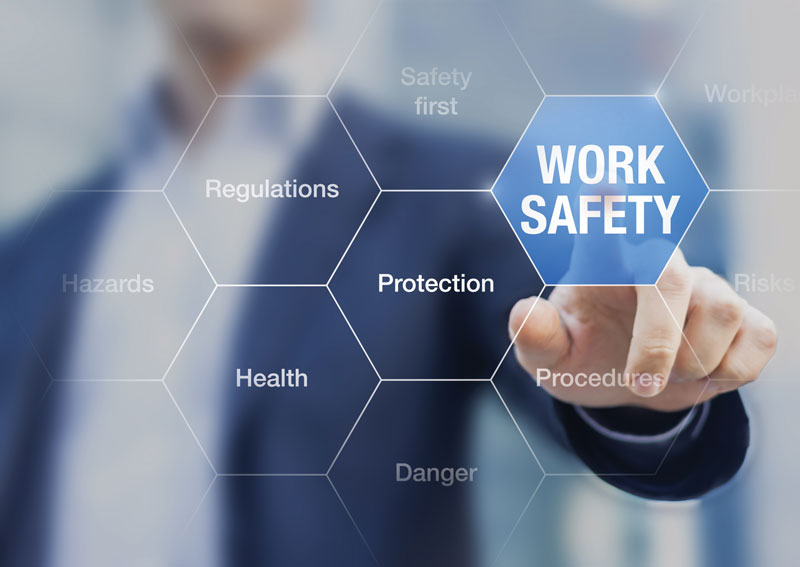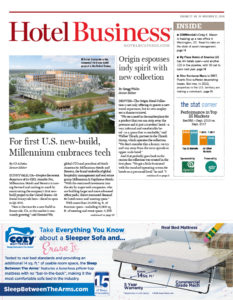NATIONAL REPORT—Earlier this year, the California Division of Occupational Safety and Health Administration (Cal/OSHA) Standards Board and Office of Administrative Law approved a Hotel Housekeeping Musculoskeletal Injury Prevention Program (MIPP) that results in changes to hospitality employers’ written policies and training practices related to workplace injuries.
The new regulation, which became effective on July 1, 2018, is intended to control the risk of musculoskeletal injuries and disorders, including carpal tunnel syndrome, back pain and tendinitis, to housekeeping staff working in establishments containing sleeping room accommodations that are rented or otherwise provided to the public, such as hotels, motels, resorts and bed and breakfast inns.
Each affected employer must establish, implement and maintain an effective, written MIPP that addresses hazards specific to housekeeping. The written MIPP may be incorporated into an existing written Injury and Illness Prevention Program (IIPP), or may be maintained as a separate program.
The effort for the addition of the MIPP was spearheaded by Unite Here, a labor union representing 270,000 members working in the hotel, gaming, foodservice, manufacturing, textile, distribution, laundry, transportation and airport industries in the U.S. and Canada.
“Discussion and debate with respect to this regulation started back in 2012,” said Shawn Fabian, senior associate in the labor employment practice group and lead associate on the hospitality team with Sheppard Mullin. “It was around that time that OSHA and the government started thinking about whether a new standard should be developed to address risks of musculoskeletal injuries among housekeepers.”
With the new regulation, employers were required to complete an initial worksite evaluation by Oct. 1. “The regulations provide for three buckets of materials,” said Fabian. “The first is a prevention program that affected employers are required to implement. The second is the worksite evaluation, and the third is a training that affected employers are required to present supervisors and housekeepers.”
The regulation requires that each property have its own program, no matter the number of properties the owner may have. “Take somebody who has a portfolio of limited-service hotels, and they may all be identical, but it doesn’t matter—it is site specific,” said Larry Eppley, managing partner of Sheppard Mullin’s Chicago office and head of the firm’s hospitality industry team. “You can’t just figure it out in one of your locations and repeat the training based on that at another location. You have to do your evaluation at each site.”
For the evaluation, management will inspect rooms with a member of the housekeeping staff and a representative of the union. “They really go through the facility,” said Fabian. “They go through the rooms and they identify hazards and potential hazards. They identify risks, including those areas of a room where there could be slips or trips and falls, and areas of the room that require extensive reaching or lifting. They will identify if there are heavy mattresses that require bending and so forth. It is a fairly specific evaluation that needs to be completed.”
Once the initial evaluation is completed, the employer must create a prevention program to ensure that there are safe housekeeping practices in place. “The program is to encourage housekeepers to inform employers about hazards at the worksite and potential risks,” said Fabian. “There must be procedures to investigate injuries, methods for correcting hazards, and there must be procedures for reviewing the program annually at each worksite to determine whether the programs have been effective over the previous years.”
The training component is a very important part of the regulations, according to Fabian. “Even when the initial worksite evaluation is completed and the prevention program is in place, that is not the end of the line,” he said. “The employer is also required to implement an annual training, and that training has several components in and of itself. It has to identify the size, the symptoms and the risk factors of these housekeeping injuries.”
He continued, “There has to be a process that the employees understand for reporting concerns. The training has to address safe practices—the proper ways to bend, stretch, reach, etc. The training has to be interactive, and the housekeepers have to have an opportunity to ask questions. The training must also be provided to supervisors of housekeepers. Supervisors are going to be required to evaluate hazards and replace equipment and so forth.”
The regulations mandate that the training be provided by someone who has knowledge of these types of injuries. “There may be folks who are employed by the hotel who can provide this training,” said Fabian. “The union representatives can assist in preparing the training materials, or employers can look to an outside consultant who is familiar and has expertise in this particular area.” HB


